Pittsburgh Community Broadcasting Timeline
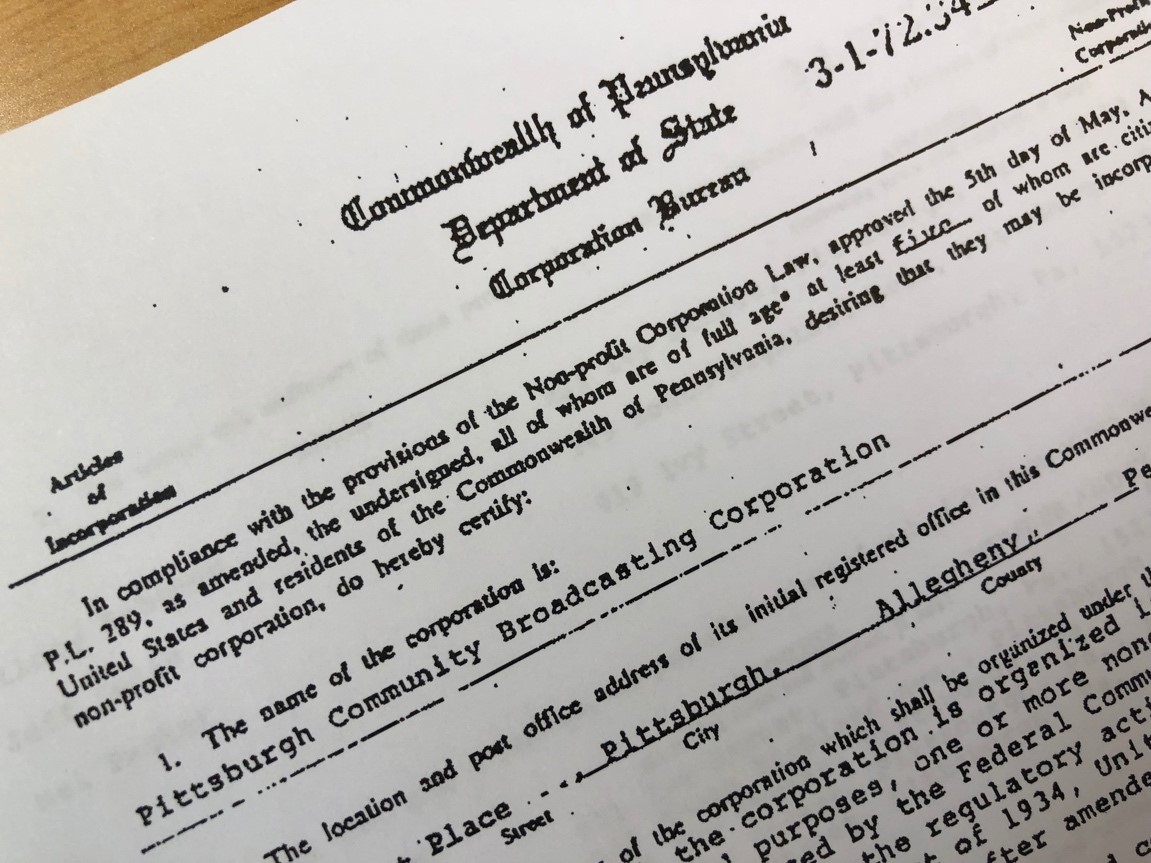
1972
On July 4, Ellery Schempp, Jeff Smith, Mel Packer, Philip Peters and Robert Pfahler first apply to incorporate Pittsburgh Community Broadcasting Corporation (“PCBC”) to operate “one or more noncommercial educational radio broadcasting stations”. The Decree of Incorporation was signed by the Secretary of the Commonwealth of Pennsylvania on July 25, 1972. The first official meeting of the new Corporation was conducted on November 20, 1972 at 920 Grant Street in Pittsburgh.
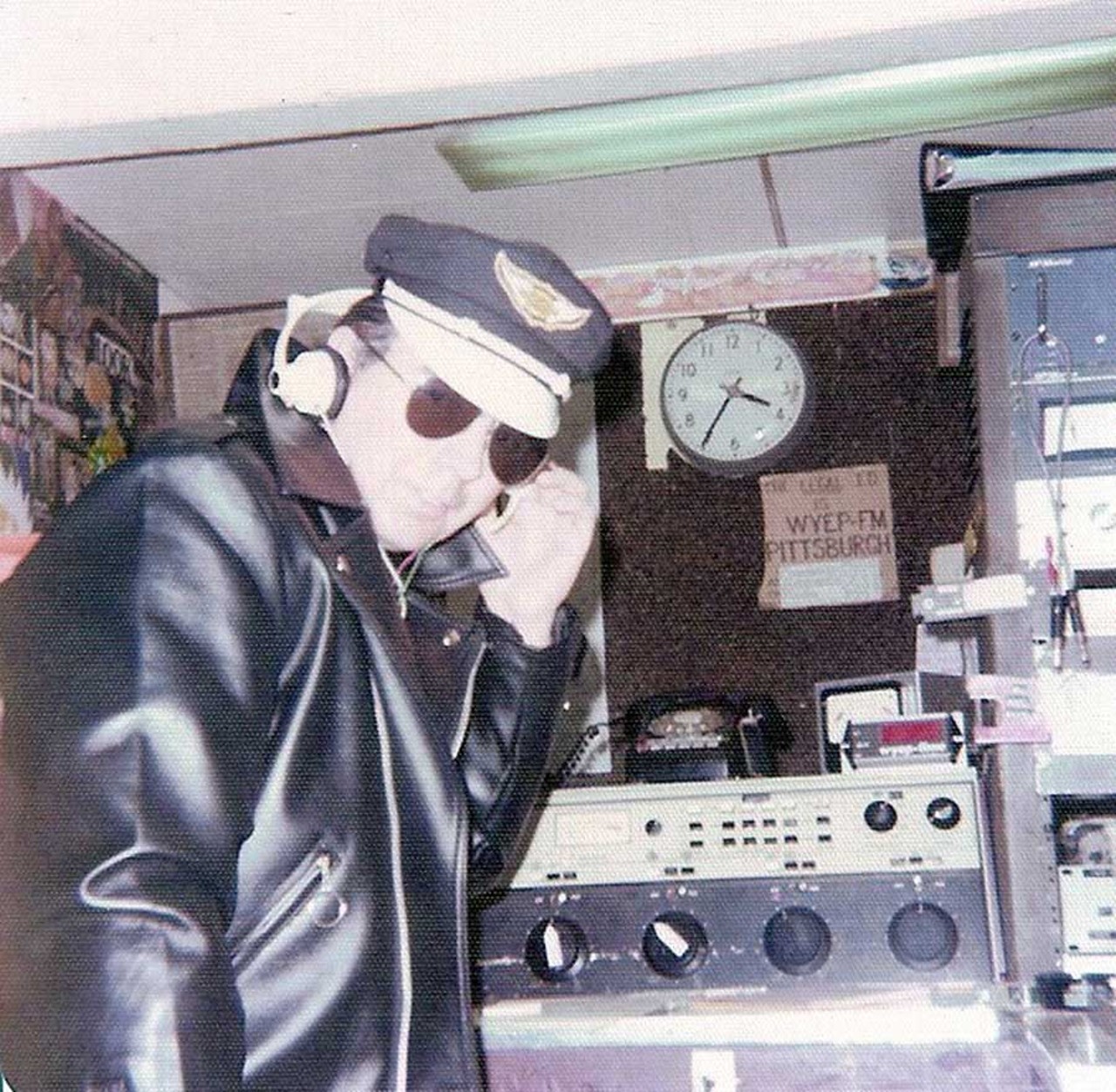
1973
PCBC produces three hour-long music and public affairs programs which are aired weekly at 4pm on Duquesne University’s WDUQ, to provide an example of the content planned for WYEP and to train its future staff on broadcast equipment. Volunteers begin construction of the station’s first studios, in the basement of a former police horse stable at 4 Cable Place in South Oakland.
1974
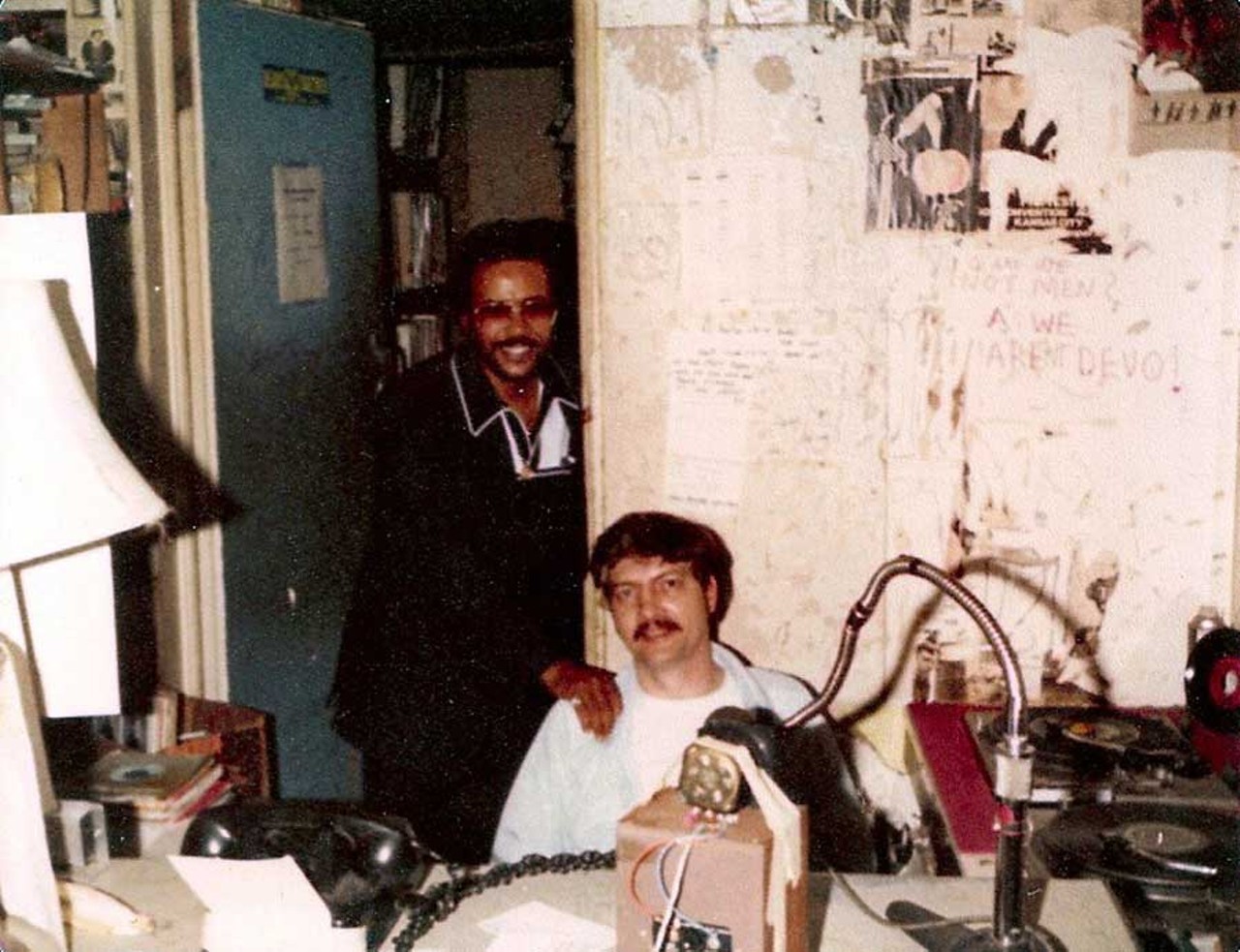
On April 30, WYEP begins broadcasting on 91.5 FM with an all-volunteer staff. Its 850-watt transmitter and antenna are located atop the Cathedral of Learning at the University of Pittsburgh. Programming is an eclectic mix of music and public affairs and is very informal – there are reports of impromptu keg parties, someone getting mugged on the air, and a DJ nearly electrocuted because of a flash flood in the basement studios.
1978
Pittsburgh Community Broadcasting hires its first paid staff, thanks to a CETA (“Comprehensive Employment and Training Act”) from the federal government.
1981
Rosemary Welsch joins the volunteer staff, beginning a long and successful career with WYEP.
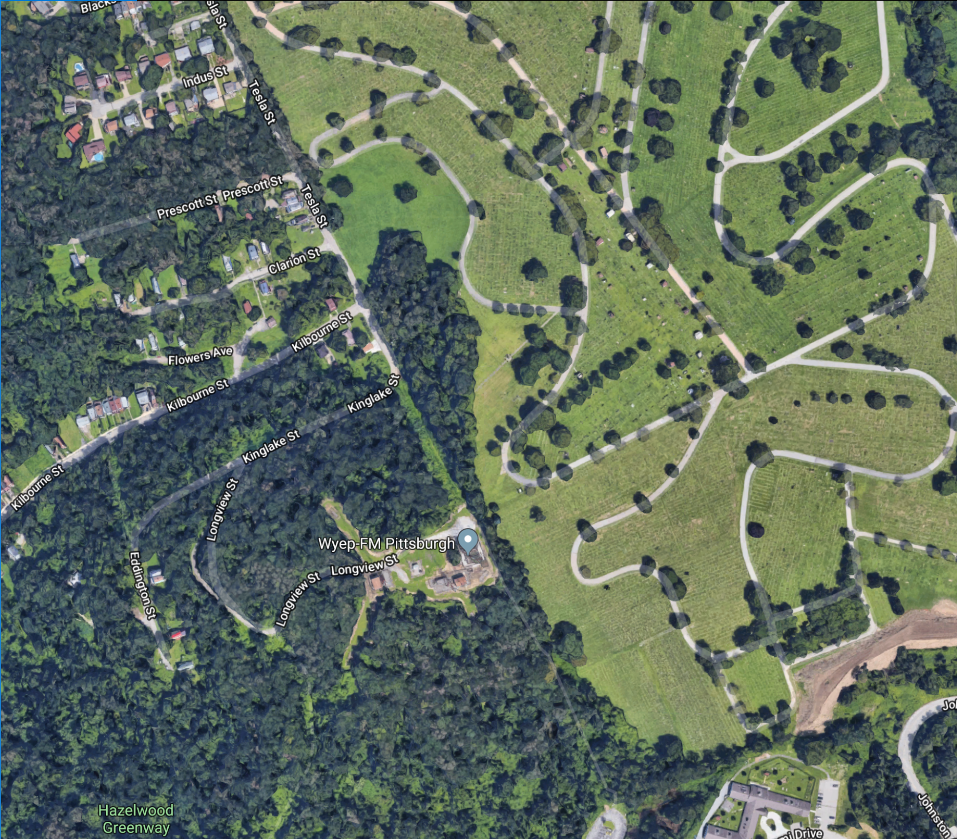
1982
WYEP goes off the air, moving its transmitter and antenna location to a tower in Hazelwood near Calvary Cemetery (still the location of the WYEP transmitter and antenna). Power is increased from 850 to 18,200 watts, and the station’s frequency is changed from 91.5 to 91.3 FM.
1985
Facing significant financial challenges, PCBC’s leadership considers options for WYEP, including returning to the University of Pittsburgh, handing the license over to WQED (the local PBS television station), or even selling the station to a religious broadcaster. Eventually the Board decides to reorganize by dissolving itself and appointing a committee to construct new bylaws.
PCBC stages a large fundraising concert featuring Billy Price and the Keystone Rhythm Band; this helps pay the bills and begin to fund construction of new studios for WYEP.
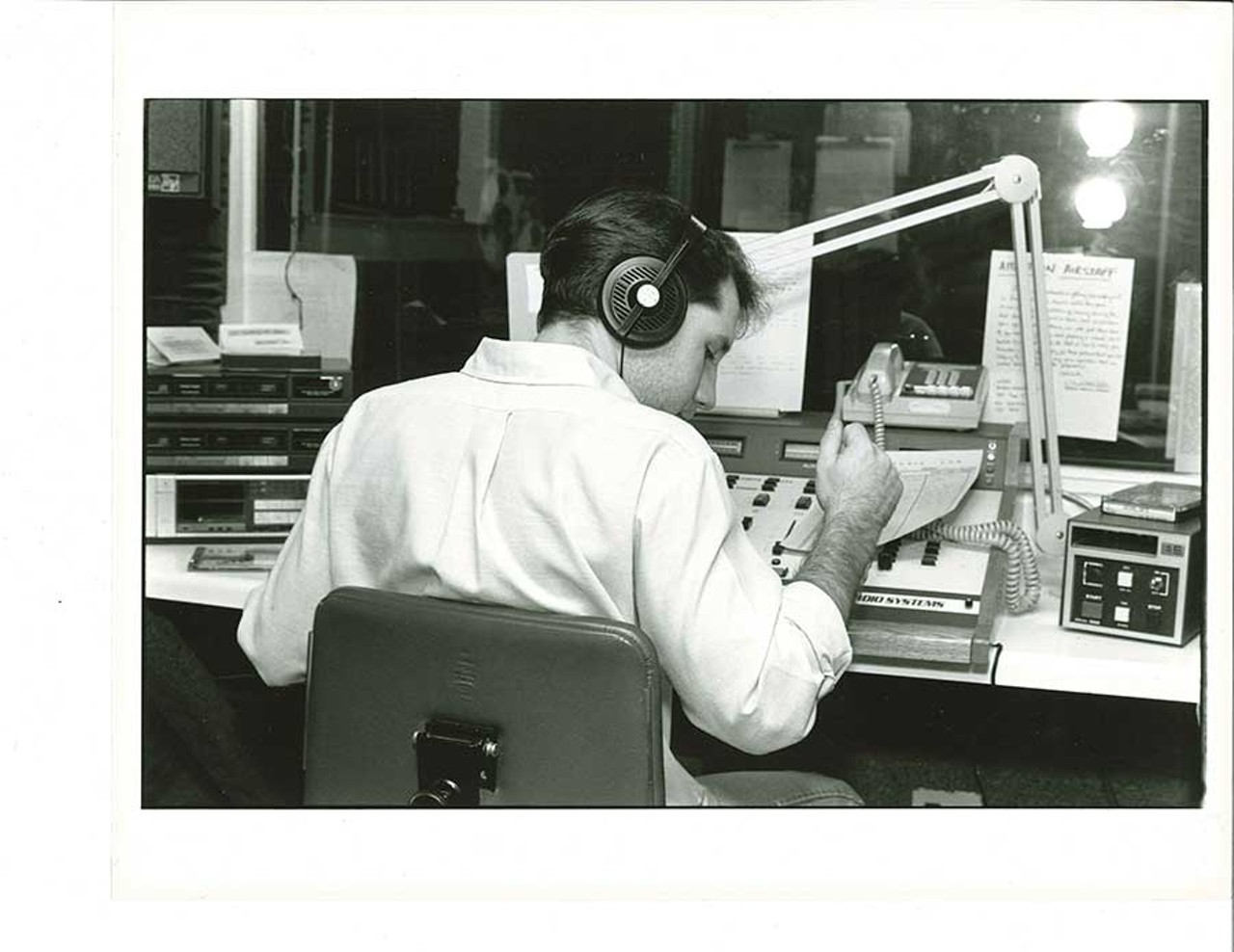
1986
Foundation and government grants are obtained to fund WYEP’s new studios, to be located on the campus of Chatham College (now Chatham University) in Pittsburgh’s East End.
1987
WYEP moves into its new Chatham College studios and begins broadcasting in stereo. Also, the first paid staffer in nearly a decade is hired.
1990
WYEP launches “Kaleidoscope” with host Rosemary Welsch; she becomes the station’s first paid on-air host. This marks the station’s move into adult album alternative music.
1993
PCBC receives a Public Telecommunications Facilities Program Grant from the U.S. Department of Commerce, which is used to purchase a new transmitter.
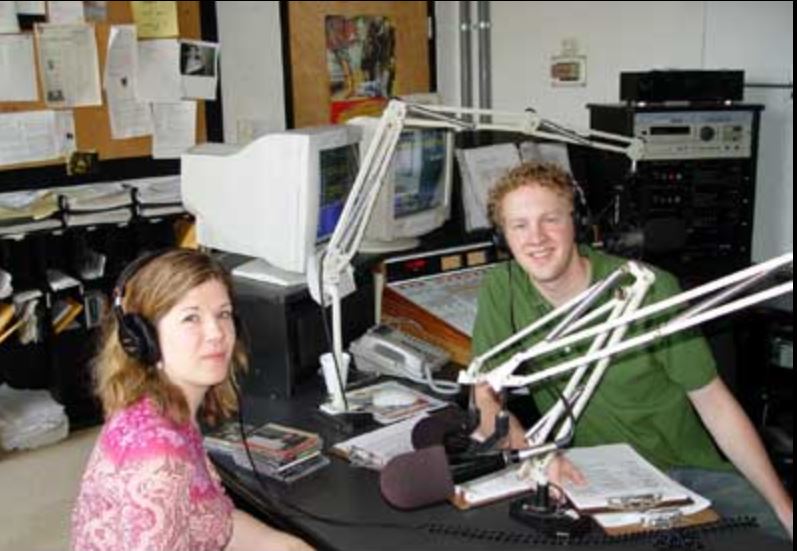
1994
WYEP relocates from the Chatham College campus to new studios at 2313 East Carson Street on Pittsburgh’s Historic South Side. The new studios are twice the size of the Chatham College facilities.
WYEP also hires two more paid on-air hosts, and for the first time has full-time staff in the morning, at midday and in the afternoon.
1996
Lee Ferraro is hired as WYEP’s General Manager, from WYCE in Grand Rapids, Michigan.
1997
WYEP partners with WXPN (Philadelphia) and The Andy Warhol Museum to stage its first Summer Music Festival.
1999
WYEP celebrates its 25th anniversary with an open house and block party on East Carson Street.
2002
The PCBC Board decides to build the Community Broadcast Center, so WYEP can be more than “just a radio station”.
2003
Work begins on a Capital Campaign, to finance the envisioned Community Broadcast Center.
2004
WYEP celebrates its 30th anniversary with a month-long celebration and a benefit concert featuring Patty Griffin.
2005
The WYEP “Turn It Up!” Capital Campaign is concluded, having raised $3.7 million from foundations and 1,700 local individuals, and ground is broken at 67 Bedford Square for the new Community Broadcast Center. It would become the nation’s first LEED Silver Certified radio station.
2006
The Community Broadcast Center opens its doors and more than 2,000 visitors come to see the new studios of WYEP (“the first green station in the nation”). Rosemary Welsch, celebrating her 25th year with the organization, played the first song from the new facilities: “Radio, Radio” by Elvis Costello.
2010
Duquesne University decides to sell WDUQ (the one-time home of WYEP’s nascent experimental programs), saying that “DUQ has evolved into a station that is virtually independent of the university.” PCBC decides to try and acquire the station, and to change its format from jazz and some NPR programming to an all-NPR News and Information format. PCBC partners with public media consultancy Public Radio Capital to create a new subsidiary company (“Essential Public Media”) and is one of four groups to submit a bid.
2011
On January 14, Duquesne University announces the sale of WDUQ to Essential Public Media for $6,000,000, with proceeds from the sale to be used to support new endowed chairs in African Studies and Mission Studies, to support scholarships and endowments for graduate students.
On July 1, the format of WDUQ is changed to news and information, with jazz programming moved to an HD channel and web stream.
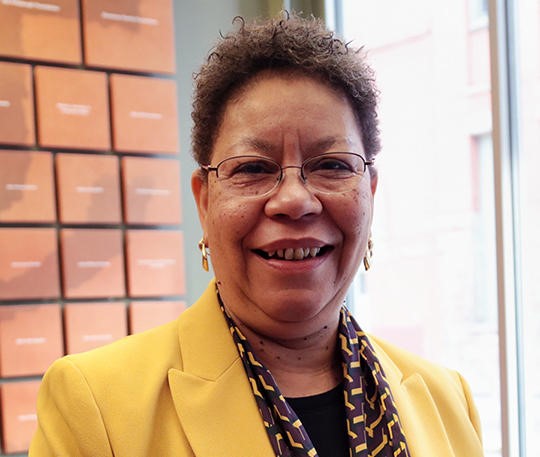
On September 1, the sale of WDUQ to Essential Public Media is finalized. Staff and operations of the station are moved across the Monongahela River from Duquesne University to the Community Broadcast Center on the South Side. While co-located with WYEP, WESA’s operations are largely separate (with the exception of shared underwriting, membership and administrative staffs); the organizations retain separate Boards of Directors.
DeAnne Hamilton, of WKAR at Michigan State University in East Lansing MI is named General Manager of the new “Essential Public Radio” (the new on-air brand for the former WDUQ).
2012
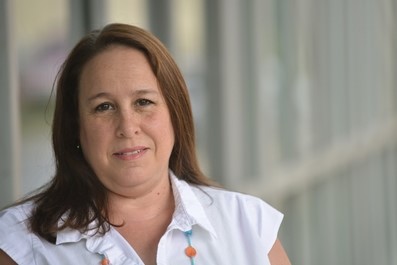
“Essential Public Radio” is discarded as the on-air brand for Pittsburgh’s NPR News Station, as the FCC grants Pittsburgh Community Broadcasting the right to use the call letters WESA; those call letters were used for more than a half-decade by radio stations in Charleroi, until 2000.
Abby Goldstein, Vice President of Programming at New Hampshire Public Radio, is named General Manager for WYEP, following the resignation of Lee Ferraro after 16 years of service.
2014
WYEP celebrates its 40th anniversary.
Note: An excellent article from 2014 on the early history of WYEP is available from Pittsburgh CityPaper.
2015
DeAnn Hamilton resigns as General Manager of WESA. Marco Cardamone, a local media entrepreneur and WESA Board member, steps in as Interim General Manager for WESA. Mark Nootbaar is named News Director for WESA.
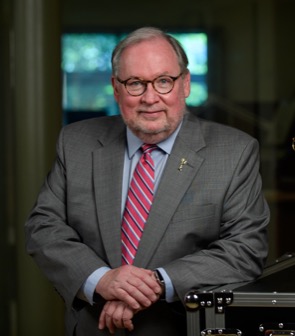
2016
The Boards of Directors of WYEP and WESA are merged, leaving Pittsburgh Community Broadcasting Corporation as their non-profit owner and operator.
In August, long-time media executive Terry O’Reilly returns to Pittsburgh as the first President and Chief Executive Officer for Pittsburgh Community Broadcast Corporation; Marco Cardamone turns over interim responsibility for general management of WESA to O’Reilly as the search for a new, permanent General Manager commences.
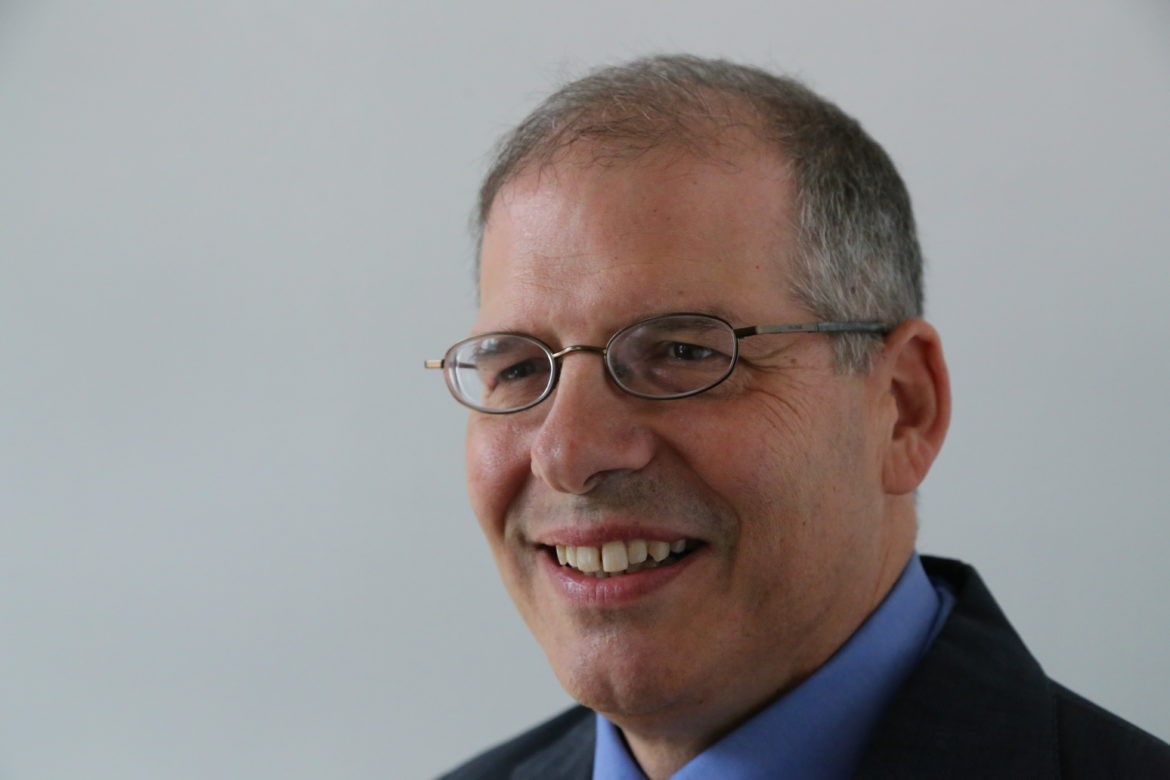
2017
Pittsburgh Community Broadcasting names John Sutton as General Manager for WESA. Later in the year, Patrick Doyle (the station’s Director of Digital and Feature Content and an experienced journalist) is named WESA’s News Director.